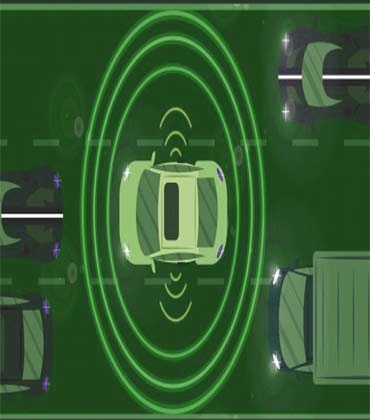THANK YOU FOR SUBSCRIBING
By Karine Fortin, Quality Director - St-Hyacinthe (Qc) Canada, Barry Callebaut Group
Following GMP is Necessary for Food Safety
By Sarah Engstrom, R&D Manager, Grande Custom Ingredients Group
Impact of Sodium-Based Food Preservatives
By Gary Kraversky, PMP, Director, Digital Manufacturing – Product owner, The Kraft Heinz Company.
Navigating the Digital Transformation: Harnessing the...
By Steve Buryk, Senior Director, Strategy & Operations, Olo [NYSE: OLO]
In a Downturn, Don't Neglect Direct Ordering

Potential Solutions to Human Error: Lessons Learned from Automation in Food Safety
Adeniyi A. Odugbemi, Global Director - Food Safety and Food Defense, at ADM

 Adeniyi A. Odugbemi, Global Director - Food Safety and Food Defense, at ADM
Adeniyi A. Odugbemi, Global Director - Food Safety and Food Defense, at ADMFood manufacturing jobs are typically manual in nature and labor intensive. They can be time-consuming, monotonous, and allow room for errors. The imperfections in food production and distribution have been linked to several food safety and quality incidents leading to several financial losses. Human error continues to be a major cause of food safety and quality in the manufacturing spectrum because of the manual elements. Being human, it is natural to make mistakes; however, when it comes to food safety, public health, and the food industry's reputation, nobody wants to make mistakes. Also, with the current labor shortage and the increased quest for better throughput, transferring valuable human resources out of repetitive and menial labor is rapidly gaining prominence. Hence, given the broad functionality of food processing, the strive to minimize and eradicate the opportunities for human error becomes imminent through automation. Automation is using machine technology to perform tasks with minimal or no human intervention. Automated systems can take care of inconsistencies and human errors that cause food safety problems for food companies. Prevalent in all manual food-handling operations, human errors continue to be a source of concern and a most common avenue where food contamination can occur. Automation therefore proffers the solution to the myriad of employee inadequacies as well as incidents of food-safety human errors. Automation poses a valid solution to fixing the human element of employee mistakes in food manufacturing.
The role of automation in food processing is becoming increasingly necessary for the industry to ensure safety and quality, reliability, remain competitive, and meet consumer expectations.
Speaking in terms of food safety, by limiting human contact and exposure to food, the risk of food contamination is minimized. Automation systems have been found to drastically reduce the rate of human-induced food safety contaminations. Automation can be applied to various stages of the food manufacturing process, including raw material handling, processing, packaging, and storage. Automated tracing systems check and track foods with virtually no manual input, so it is easy to see what is happening at any point in the preparation, production, and delivery supply chain functions. In today’s food business terrain, automation is indispensable to food production and distribution. Automation is the way of the future for success in food manufacturing.
In terms of productivity and operational excellence, automated systems can be designed to minimize the risk of cross-contamination and ensure food is managed and processed safely and hygienically, thereby reducing the risk of foodborne illness. With the right combination of automation systems and food-processing pieces of equipment, detecting food safety issues earlier in the supply chain is easier and faster. Detecting problems right away helps companies avoid more severe issues later and save costs. Automation also makes it possible to accurately discover where a specific problem started. Once you define the weak point, you can determine how to deal with the issue and prevent it from happening in the future.
“To strengthen operational performance and manage an engaged workforce, perfecting each operation step with automation evolves growth opportunities and enhances the goal of human error reduction.”
With the need for precision and accuracy in the operating steps, using automation to stabilize repetitive processes, such as packing, sorting, and processing, helps food businesses measure safety and quality, as well as save on operating costs. With automation taking care of routine tasks, employees can dedicate their energy to supplying value-added services and engaging in cognitively demanding activities.
This increases productivity and allows for more efficient use of human resources to produce safe and quality food products. Furthermore, the automation of food manufacturing processes has enabled real-time monitoring and data collection, leading to better decision-making and improved production processes, to end repeated food safety failures.
Within the scope of the confusing and contradictory science of food processing, automation continues to be the solution to reducing unpredictable human errors leading to food poisoning outbreaks. As food safety challenges with digital transformation and operational strategies are on the rise, such suitability of the food product is being questioned. Trending business insights within the food and beverage sphere show human interaction as a leading source of failures. Hence, curated content to keep the product safe abides within automation. Automation helps food business leaders achieve food safety metrics that ensure compliance with regulations and meeting consumer expectations. These automated machine processes produce infrastructure upgrades that offer better financial rewards to the business and drop the human error interface. Automated systems can be designed to minimize the risk of cross-contamination and ensure food is managed and processed safely and hygienically, thereby reducing the risk of foodborne illness.
To strengthen operational performance and manage an engaged workforce, perfecting each operation step with automation evolves growth opportunities and enhances the goal of human error reduction. Overall, the future of automation in the food industry is poised to transform the food sector, ensuring sustainable practices, increased food safety, and improved customer experiences, ultimately paving the way for a more effective and sustainable future. Automation can improve productivity, efficiency, safety, and quality of food products while reducing labor costs and human errors.
Read Also





![Steve Buryk, Senior Director, Strategy & Operations, Olo [NYSE: OLO] In a Downturn, Don't Neglect Direct Ordering](https://www.fbtechreviewapac.com/newstransfer/upload/370x420_X257.jpg)









